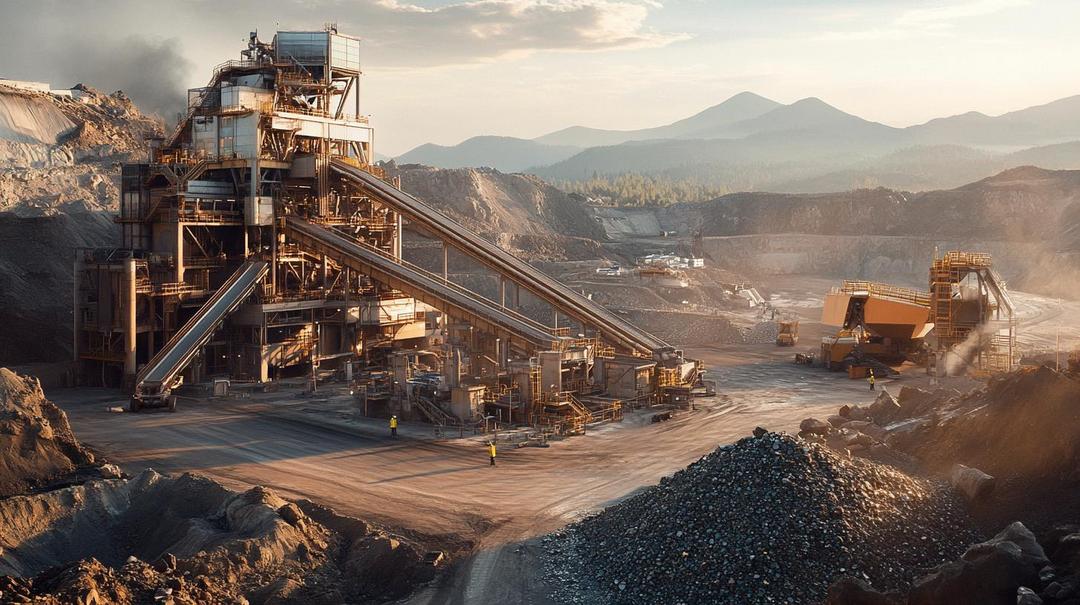We’ll dive into why rare earth elements are the backbone of modern technology, which nations rely most on imports, and how global trade dynamics impact policymakers, researchers, and industry leaders. Understanding this supply chain isn’t just academic—it could define the global balance of power in the 21st century.
Let’s dig in!
What's Inside
What Are Rare Earth Elements, and Why Are They Important?
Rare earth elements (REEs) are a group of 17 metallic elements crucial to modern technology and green energy solutions. These elements, including neodymium, lanthanum, and dysprosium, play a pivotal role in numerous advanced applications:
- Wind turbine generators
- Smartphone components
- Electric vehicle batteries
- Defense and military technologies
- High-performance magnets
- Advanced electronics
Despite their name, rare earth elements are relatively abundant in the Earth’s crust. However, their extraction and processing are complex, expensive, and environmentally challenging. China currently dominates global production, controlling over 70% of the world’s rare earth supply.
Strategic Importance of REEs
REEs are critical for national security and technological innovation. Their unique magnetic, luminescent, and electrochemical properties make them irreplaceable in:
- Advanced military equipment
- Precision guidance systems
- Satellite technologies
- Renewable energy infrastructure
- Cutting-edge semiconductor manufacturing
Which Countries Are Most Dependent on Rare Earth Imports?
United States
The U.S. faces significant challenges in rare earth supply chains:
- Heavy dependence on imports for defense and technology sectors
- Limited domestic production capabilities
- Strategic efforts to reduce reliance on Chinese imports
- Investments in alternative supply sources and domestic mining initiatives
Japan
Japan’s rare earth dependency is particularly pronounced in:
- Consumer electronics manufacturing
- Automobile industry
- Advanced technological components
- Emerging recycling and substitution technologies
European Union
EU countries exhibit varied levels of rare earth dependencies:
- Strong focus on green energy transitions
- Diverse import strategies across member states
- Increasing investment in sustainable supply chains
- Implementation of the European Green Deal
India
India’s rare earth landscape is characterized by:
- Rapid technological sector expansion
- Limited domestic production
- Growing import requirements
- Emerging strategies for supply chain diversification
South Korea
Key rare earth import characteristics include:
- Critical for semiconductor production
- Heavy reliance on imports for display technologies
- Strategic partnerships with global suppliers
- Investments in alternative sourcing methods
Why Are These Countries Dependent on Rare Earth Imports?
Multiple interconnected factors drive rare earth import dependencies:
- Concentrated global production (China’s dominant market position)
- Technically complex extraction and processing requirements
- Significant environmental challenges in mining operations
- High initial investment costs for domestic production
- Economic inefficiencies in local rare earth extraction
Geopolitical Implications of Rare Earth Dependencies
The global rare earth landscape is fraught with strategic tensions:
- China’s potential export control leverage (opens in a new tab)
- Risks of supply chain disruptions during geopolitical conflicts
- National security implications
- Technological advancement limitations
Solutions and Future Strategies for Reducing Dependence
Promising approaches to mitigate rare earth dependencies include:
- Developing alternative suppliers (Australia, Canada, African nations)
- Investing in domestic mining and recycling technologies
- Researching potential material substitutes
- Establishing international cooperative frameworks
- Diversifying global supply chains
These strategies aim to create more resilient and sustainable rare earth element ecosystems, reducing single-source vulnerabilities and promoting technological innovation.
Conclusion
Rare earth elements are indispensable to modern technology, green energy, and national security, yet their global supply chains are fraught with challenges. The strategic importance of REEs lies in their unique properties that drive innovation in industries ranging from renewable energy to advanced military systems. However, heavy reliance on imports, especially from China, poses economic, environmental, and geopolitical risks for many nations. Addressing these challenges requires a multifaceted approach, including diversification of suppliers, investment in domestic production and recycling, and research into material substitutes. By prioritizing sustainable and resilient strategies, countries can secure access to these critical resources, ensuring continued technological progress and energy transition efforts in a rapidly evolving global landscape.
FAQs
What Are Rare Earth Elements, and Why Are They Critical?
Rare earth elements (REEs) are 17 elements vital for modern technologies like smartphones, wind turbines, and defense systems. They’re critical because they enable high-performance functionality in tech and clean energy applications.
Why Are Most Countries Dependent on China for Rare Earths?
China dominates over 70% of the global rare earth market due to its established mining infrastructure, cost-effective processing techniques, and government policies prioritizing rare earth production.
Are There Alternatives to Rare Earths in Technology?
Researchers are exploring alternatives, including material substitution and innovations to reduce reliance on REEs in tech products. However, scalable solutions are still in development.
How Do Geopolitical Tensions Affect Rare Earth Supply Chains?
Trade conflicts, such as US-China disputes, can disrupt the rare earth market. Countries reliant on imports face supply chain insecurity, impacting industries like defense and clean energy.
What Steps Are Countries Taking to Reduce Rare Earth Dependency?
Countries are diversifying suppliers, increasing domestic mining, recycling REEs, and investing in R&D for material alternatives. International partnerships are also being explored to share resources and reduce reliance on a single nation.


Dustin
Driven by a fascination with rare earth elements and their role in powering modern tech and engineering marvels. A true car and tech enthusiast, he loves exploring how these hidden heroes fuel our most exciting innovations.
You Might Also Like…